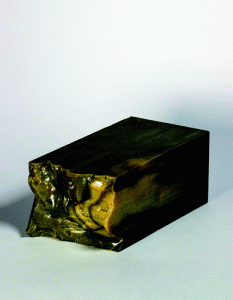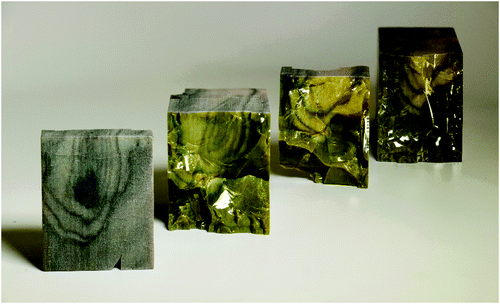Australian researchers use 3D printing to make food more palatable to dysphagia sufferers
Columbia University 3D printed food challenges conventional flavor profiles
Researchers 3D Print “Digital Wood” with Complex Internal Textures Using Polyjet
 In a paper entitled “Digital Wood: 3D Internal Color Texture Mapping,” a group of Columbia University researchers discusses how they used a voxel printing technique to replicate both the surface and external color textures of organic materials such as wood.
In a paper entitled “Digital Wood: 3D Internal Color Texture Mapping,” a group of Columbia University researchers discusses how they used a voxel printing technique to replicate both the surface and external color textures of organic materials such as wood.
“Until recently, inkjet-style 3D printing technologies have been successfully utilized in the manufacture of parts with complex topologies and full color surface textures. However, these printers have struggled with parts that have anisotropic internal structures as seen in many organic materials,” the researchers explain. “This drawback stems from inherent incompatibility of delivering dissimilar materials to every resolvable point of an object being printed with established 3D printing processes, such as selective laser sintering and fused deposition modeling. As of early 2018, voxel printing is possible on both the HP and Stratasys printers mentioned previously; however, preparing files for voxel printing is a challenge left largely unaddressed by printer manufacturers.”
Voxel printing enables manufacturers to produce multimaterial parts with complex internal structures that replicate bone, for example, or wood. The researchers used a voxel printing technique in their study to replicate the external and internal color textures of an olive wood sample. The process involved removing consecutive thin slices from the wooden sample and capturing digital images of each slice. The resulting stack of 230 images was then post-processed using photo editing software before being input into a Stratasys J750 3D printer, which is capable of 3D printing at the voxel level. The 3D printer then sequentially printed layers corresponding to the stack of images.
The 3D printed blocks were then dipped in liquid nitrogen and shattered, or broken using a chisel. The broken blocks revealed an intricate wood grain inside, showing that the printing process is capable of reproducing the entire interior texture and color of the original piece of wood.
“It is no coincidence that algorithmic, bioinspired designs, which are pervasive in natural phenomena, are well suited to the voxel printing workflow,” the researchers state. “This is because they are inherently cell-based processes adept at arranging voxel-like patterns to achieve an optimal state.”
 The researchers used a destructive imaging technique, cutting the wood apart to gain the thin slices that were then fed to the 3D printer. But there are other, less destructive ways of imaging a sample, the researchers state, such as magnetic resonance imaging, MR enterography, X-ray, or infrared imaging. Further information can also be obtained by cross-referencing data obtained from different techniques such as thermal, mechanical, acoustic and electrical imaging. It is also possible to entirely generate point clouds through software, like in the case of fractal-inspired materials.
The researchers used a destructive imaging technique, cutting the wood apart to gain the thin slices that were then fed to the 3D printer. But there are other, less destructive ways of imaging a sample, the researchers state, such as magnetic resonance imaging, MR enterography, X-ray, or infrared imaging. Further information can also be obtained by cross-referencing data obtained from different techniques such as thermal, mechanical, acoustic and electrical imaging. It is also possible to entirely generate point clouds through software, like in the case of fractal-inspired materials.
“It is worth noting that voxel-printed objects comprised of dissimilar materials can exhibit significant nonintuitive anisotropies, which can be challenging to simulate,” the researchers conclude. “Thus, judicious use of testing and simulation is needed to predict their behavior and inform the production of algorithmically designed materials. While this work focused on digital reproducibility of wood, the same approach can be applied to many other anisotropic materials. Moreover, this study has shown the ability to ‘photoshop’ 3D structures to change color along with the potential for applying internal structures to arbitrarily complex shapes.”
Authors of the paper include Fabian Stute, Joni Mici, Lewis Chamberlain and Hod Lipson.
Discuss this and other 3D printing topics at 3DPrintBoard.com or share your thoughts below.

